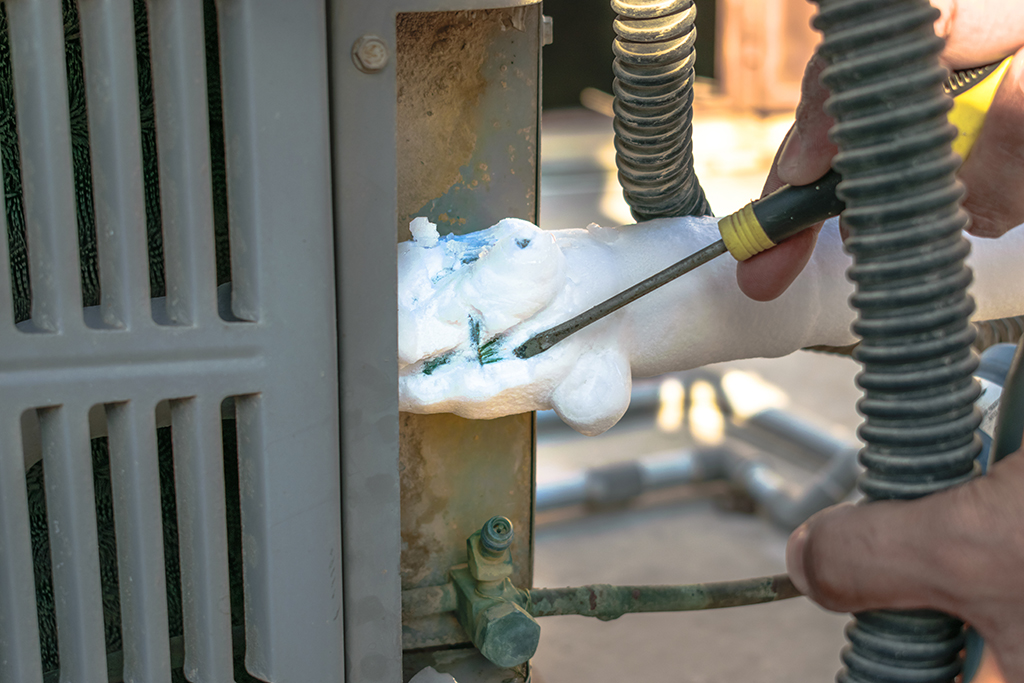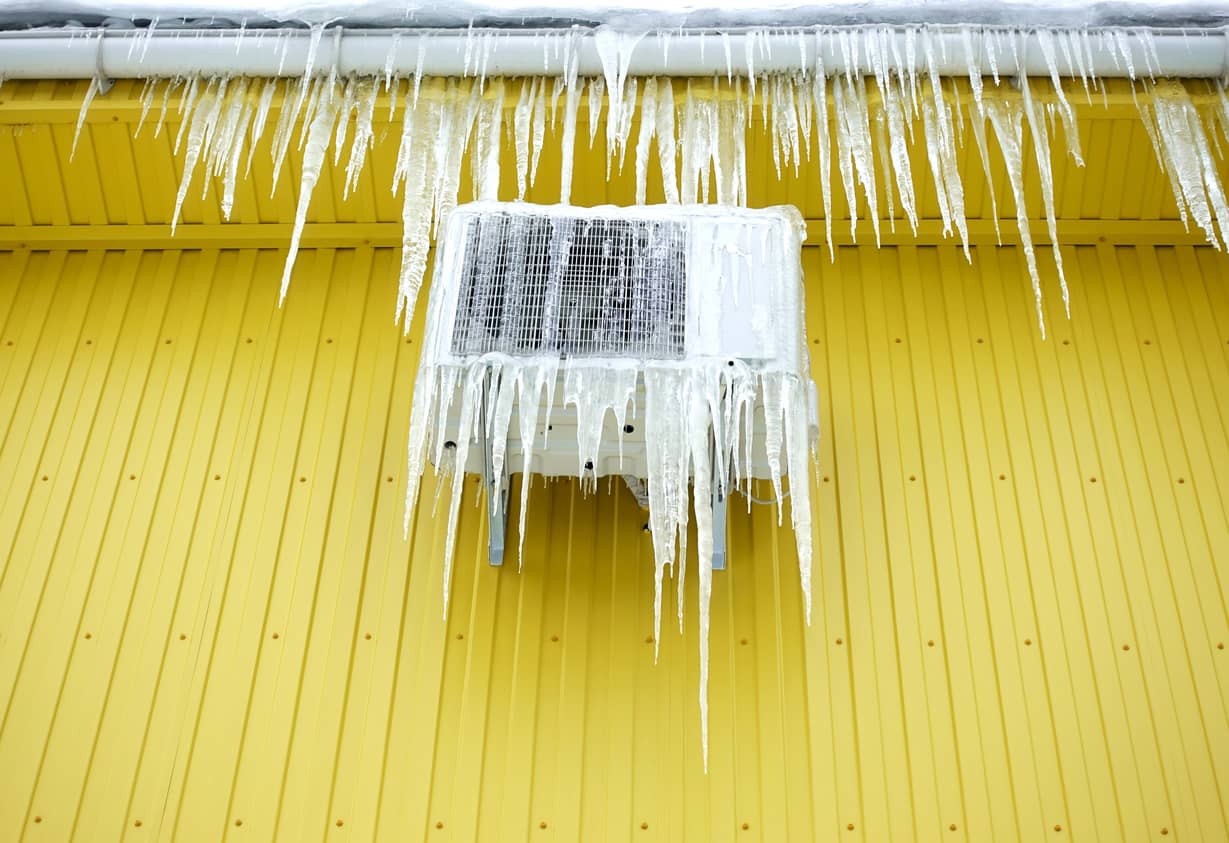How do you actually feel on the subject of Air Conditioner Frozen? How To Fix your Frozen AC Line?

Introduction
Finding that your air conditioning pipeline is frozen can be worrying, especially throughout warm summer season when you rely on your air conditioning unit one of the most. Understanding what to do in such a circumstance is critical to prevent additional damages to your cooling system and ensure your convenience indoors.
Understanding the Causes
Several aspects can contribute to the freezing of an air conditioning pipeline. Understanding these causes can assist you address the concern effectively.
Absence of Airflow
One typical source of a frozen AC pipeline is inadequate airflow. When the air flow over the evaporator coil is limited, it can cause the coil to go down below freezing temperature, bring about ice development on the pipeline.
Reduced Refrigerant Levels
Not enough refrigerant degrees in your a/c system can also lead to a frozen pipeline. Low cooling agent degrees can trigger the pressure in the system to drop, bring about the freezing of moisture on the evaporator coil.
Cold Weather Conditions
In colder environments, freezing temperatures outside can contribute to the cold of air conditioner pipelines. If your a/c unit is not correctly protected or if there are leakages in the ductwork, chilly air can infiltrate the system, creating the pipe to freeze.
Dirty Air Filters
Unclean or blocked air filters can limit airflow in your air conditioning system, bring about various problems, consisting of an icy pipe. It's important to change or cleanse your air filterings system routinely to make sure appropriate air movement and protect against ice accumulation.
Indicators of a Frozen A/c Pipe
Recognizing the signs of an icy a/c pipeline is critical for timely activity.
Reduced Airflow
If you observe a significant decrease in air flow from your vents, it could indicate an icy pipe.
Ice Buildup on the Pipe
Noticeable ice accumulation on the refrigerant line or the evaporator coil is a clear sign of an icy a/c pipe.
Odd Sounds from the Unit
Unusual sounds, such as hissing or gurgling, originating from your air conditioning device can signal that there's ice present on the pipeline.
Immediate Actions to Take
When confronted with a frozen a/c pipeline, it's essential to act rapidly to avoid more damage to your cooling system.
Turning off the air conditioning
The primary step is to turn off your air conditioning unit to stop the system from running and exacerbating the problem.
Checking for Blockages
Examine the location around the indoor unit for any kind of obstructions that may be blocking air flow, such as furnishings or drapes.
Defrosting the Pipe
You can make use of mild approaches like placing towels taken in cozy water around the icy pipeline to aid thaw it gradually.
Safety nets
Taking safety nets can aid stay clear of future events of an icy a/c pipeline.
When DIY Methods Fail
If your attempts to thaw the pipe or address various other concerns are not successful, it's time to employ an expert.
Significance of Hiring a Professional HVAC Technician
A licensed HVAC service technician has the experience and devices necessary to identify and fix problems with your AC system securely and properly.
Normal Maintenance Checks
Arrange regular maintenance checks with an expert HVAC service technician to ensure that your air conditioning system is running successfully.
Changing Air Filters
Routinely change or cleanse your air filters to stop airflow limitations and preserve optimal efficiency.
Shielding Exposed Pipes
If your air conditioner pipelines are exposed to cool temperature levels, think about insulating them to stop freezing throughout winter season.
Seeking Professional Help
If DIY approaches stop working to resolve the concern or if you're unsure concerning how to continue, it's ideal to seek aid from a qualified HVAC service technician.
Conclusion
Handling an icy AC pipe can be an irritating experience, but knowing exactly how to react can aid decrease damage and restore comfort to your home. By comprehending the reasons, acknowledging the signs, and taking punctual action, you can effectively attend to the issue and stop future occurrences.
G UP? HOW TO FIX IT?
It happens all over America. And the rest of the world probably. It’s the hottest day ever and for some darn reason your AC isn’t cooling the house. You fiddle with the thermostat to try and fix the problem. Nada. All you can do now is go outside and check the AC unit. You make your way there and find your air conditioner unit is frozen! But how?
In this post we’ll cover how you can tell that your air conditioner has frozen (other than the obvious reasons), what could have caused the freeze, and some of the things you can do about your AC freezing up. And if you have a frozen heat pump condenser, read our blog about it to learn what to do! But remember, it is always best to avoid your AC freezing up with an AC tune up. And if you are moving into a home, it's critical to get HVAC inspection so that you are aware of an AC problems before you move in.
Keep reading and you may be able to fix the frozen AC yourself. If you can’t, call an HVAC specialist. If you live in Maryland, call SuperTech HVAC for AC repair. We’ll take care of it.
How Does An Air Conditioning Unit Work?
How you probably imagine an AC works is wrong. Contrary to popular belief, an AC system does not inject cool air into a building. Instead, it removes the heat from inside and transfers it outside. Cool huh? (Pun intended).There are 4 major components among the 3 stations of an air conditioning system: the evaporator coil, the compressor, the condenser, and the refrigerant – a special chemical that links everything together through a closed loop system.
Station 1:
Warm indoor air is sucked into the return vent, through a filter, and blows over the evaporator coil. The heat is absorbed into the cold refrigerant, turning it from liquid to gas. The air, which is now cool, is blown back into the home to areas that your thermostat, i.e. you, has decided.
Station 2:
The refrigerant makes its way outside the house to the compressor, which squeezes the warm refrigerant, raising its gaseous temperature even more.
Station 3:
When the super hot vapor refrigerant reaches the condenser, the last step, the heat is expelled and absorbed into the outdoor air. The refrigerant instantly cools, which changes it from gas back to liquid form. The cold liquid refrigerant is now ready to return to station 1 and repeat the process.
Is Your AC Freezing Up? Here Are The Signs:
As you may have guessed, your air conditioner unit freezing up on a hot day is not normal.
If this happens, there's no need to panic. Often the issue can be solved with a little troubleshooting. If the AC unit is left frozen for too long however, you may find yourself with a bigger problem.
First things first, how do you know your AC is frozen?
Well, the obvious sign is the ice on your refrigerant line-set pipe. Simply check between your outdoor AC unit and your home's exterior wall to see whether your AC line frozen.
You might also have a frozen evaporator coil. This one's not as easy to check. You'll need to open a panel on the indoor unit to inspect. Don't do this unless you're handy. If you aren't, call an HVAC pro like SuperTech HVAC or you may damage something in the process.

Do you like more info about What Do I Do If My AC Pipe Is Frozen? Leave a remark below. We will be delighted to hear your ideas about this content. We are looking forward that you visit us again before long. Those who appreciated our blog posting kindly remember to share it. Thanks for your time. Come back soon.
Book A Free Estimate